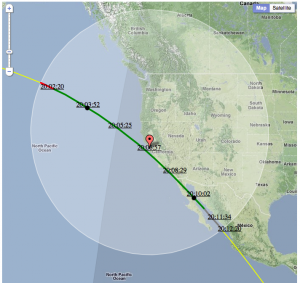
Background
Seeing something in space fly overhead with the naked eye is pretty awesome. It’s not only a technical marvel to enjoy, but for me it helps keep things in perspective and my thoughts on the big picture. Ever since the first time I saw the International Space Station fly by, I’ve felt that it is something everyone should experience. I started looking at existing software to help remind me (and others) when the next pass of the ISS would be, and while there are a few good websites out there for satellite prediction, none of them did exactly what I wanted. So a few months ago I decided to try and build my own. The biggest piece of my project was going to be getting the actual satellite data. So I looked around for existing data APIs that I could use, but couldn’t find anything other than scraping existing sites (which is not only fragile, but some have no published data policy). So, the first step was to figure out how to to generate the predictions myself. (more…)